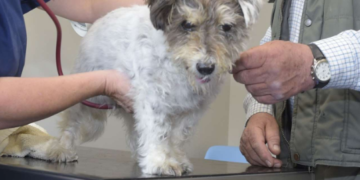The COVID-19 pandemic has significantly impacted how healthcare is delivered and received. You can safely receive healthcare after the pandemic in several ways as the world begins to recover and adapt. From telehealth to personalized healthcare services, healthcare providers are implementing new strategies to ensure the safety of their patients.
Telehealth
Telehealth is a way to get treatment without going to the clinic, reducing the risk of exposure to the virus. Following the pandemic, telemedicine became increasingly popular to get medical care.
Telehealth uses technologies like video conferencing and telephone calls. This advancement means that you no longer have to leave the safety of your home to access medical care. Additionally, it eliminates the need for in-person consultations by letting doctors make diagnoses and prescribe medications to patients from a distance.
Telehealth eliminates the need to travel to healthcare facilities, reducing the burden on transportation systems and the risk of transmission. It also allows easier and more frequent follow-up consultations, improving overall care.
Home Healthcare Services
Home healthcare services are becoming increasingly popular among those who are either immunocompromised, elderly, or otherwise unable to leave their homes for medical reasons.
Medication administration, physical therapy, wound care, and dietary advice are all examples of services that fall under this category. The home healthcare approach decreases the danger of exposure to contagious infections, such as the COVID-19 pandemic.
Healthcare professionals offering home visits bring all the necessary equipment to your house. This way, you can avoid the hassle and potential risk of going to the hospital or clinic. To further lessen the danger, home healthcare agencies may also offer telehealth services, including telemedicine and telerehabilitation.
Mobile Healthcare Units
Many regions had to severely restrict or suspend healthcare operations to contain the Covid-19 pandemic. Mobile healthcare units help solve this problem by bringing quality medical treatment directly to people who need it. These units can take several forms, such as temporary medical facilities or ambulances.
Patients and staff in mobile healthcare units are protected by various safety measures, including using PPE and rigorous screening procedures. These units also help control the spread of the infection by reaching people in hard-to-reach locations and relieving pressure on overcrowded hospitals.
Another benefit of mobile healthcare units is that you are less likely to be infected because you spend less time in waiting rooms. Mobile healthcare units can help ensure that people get the care they need by bringing medical services to them.
Remote Patient Monitoring
You can gather much patient data, including vital signs and symptoms, through remote patient monitoring. You can also use a computer or smartphone to send the acquired health information to medical professionals.
Remote patient monitoring software allows healthcare providers to monitor their patient’s health remotely, reducing the risk of virus exposure. Additionally, this software can collect data that can be used to monitor vitals such as blood pressure, heart rate, and other health indicators. This data can identify potential health issues before they become serious and help healthcare providers make better decisions about their patient’s care.
RPM allows doctors to monitor patients, collect data, and adjust to improve care outcomes. Patients with chronic diseases, such as diabetes, heart disease, asthma, and the lasting effects of a COVID-19 infection, can benefit from this kind of constant monitoring.
Virtual Waiting Rooms
A virtual waiting room is a digital platform where you can wait to be attended to by a healthcare professional without being physically present in a medical facility’s waiting room. By utilizing virtual waiting rooms, you can avoid sitting close to one another, preventing the spread of contagious diseases.
Virtual waiting rooms allow you to wait for your appointments from the comfort of your home or elsewhere. This can assist in reducing the amount of time spent waiting in the medical institution, leading to greater efficiency.
Virtual waiting rooms can serve as a portal to remote care, connecting you with healthcare practitioners via telemedicine or other digital platforms.
Conclusion
The Covid-19 pandemic has caused a great upheaval in delivering healthcare. However, people can still receive safe and effective healthcare services with the right strategies and precautions. Digital healthcare, telemedicine, and virtual visits offer new opportunities to receive healthcare while maintaining safety.































































